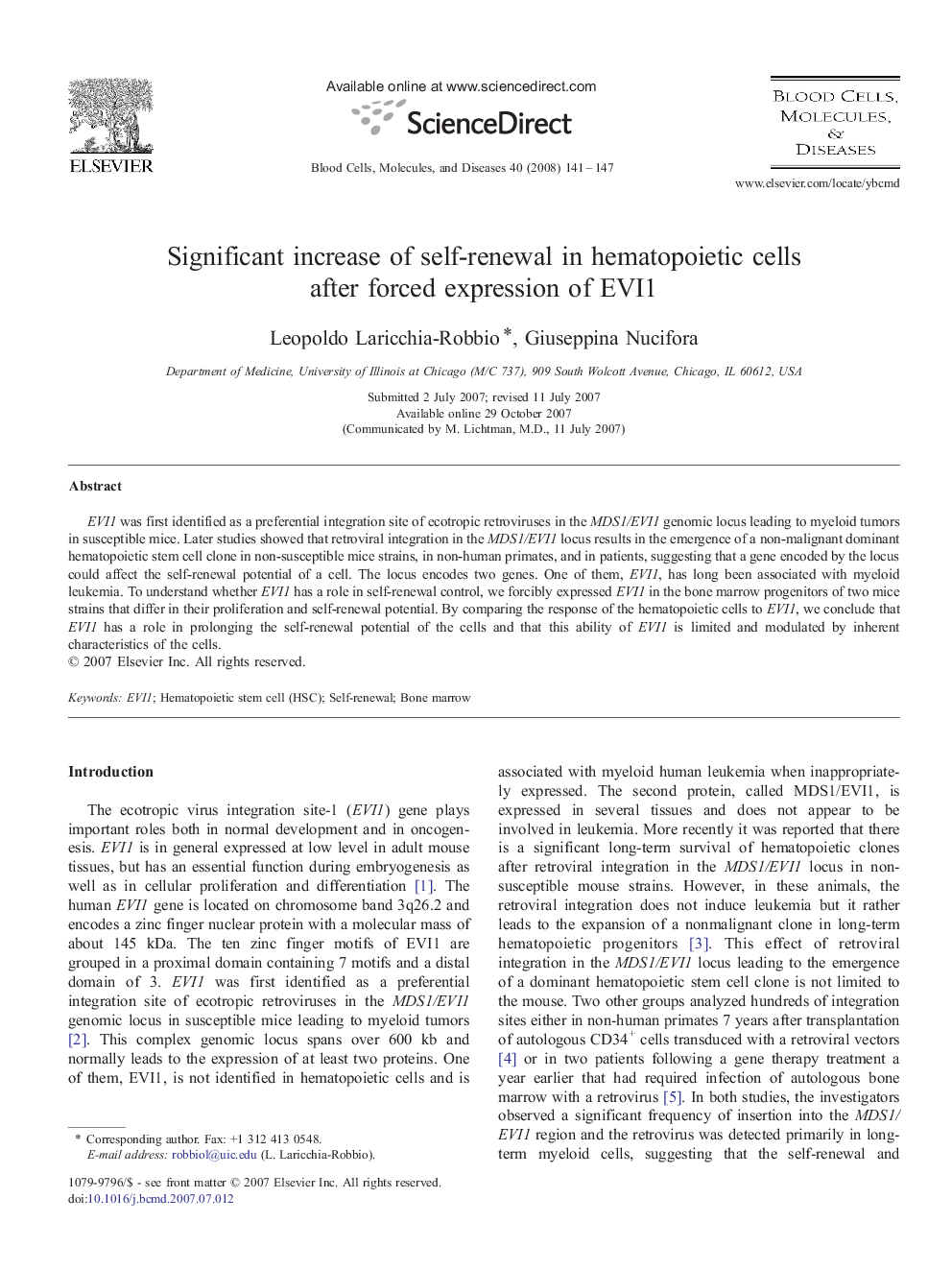| Article ID | Journal | Published Year | Pages | File Type |
|---|---|---|---|---|
| 2827975 | Blood Cells, Molecules, and Diseases | 2008 | 7 Pages |
Abstract
EVI1 was first identified as a preferential integration site of ecotropic retroviruses in the MDS1/EVI1 genomic locus leading to myeloid tumors in susceptible mice. Later studies showed that retroviral integration in the MDS1/EVI1 locus results in the emergence of a non-malignant dominant hematopoietic stem cell clone in non-susceptible mice strains, in non-human primates, and in patients, suggesting that a gene encoded by the locus could affect the self-renewal potential of a cell. The locus encodes two genes. One of them, EVI1, has long been associated with myeloid leukemia. To understand whether EVI1 has a role in self-renewal control, we forcibly expressed EVI1 in the bone marrow progenitors of two mice strains that differ in their proliferation and self-renewal potential. By comparing the response of the hematopoietic cells to EVI1, we conclude that EVI1 has a role in prolonging the self-renewal potential of the cells and that this ability of EVI1 is limited and modulated by inherent characteristics of the cells.
Related Topics
Life Sciences
Biochemistry, Genetics and Molecular Biology
Molecular Biology
Authors
Leopoldo Laricchia-Robbio, Giuseppina Nucifora,
